POWER-VALVE TUNING: YOUR FAQS ANSWERED
In recent years, Beta’s big-selling big-bore two-stroke enduro model, the RR300, has repeatedly impressed us with its uncanny ability to tractor effortlessly up slippery hills and rock ledges – a character trait that was further enhanced in 2022, when the Italian manufacturer introduced its short-stroke 300cc two-stroke engine. And while it’s true that this new-gen, short-stroke powerplant also delivers more high-rev power and overrev than its predecessor, low-rev tractability remains its standout feature – a fact we were constantly reminded of when riding our 2024-model RR300 project bike. Beta’s unique 300cc two-stroke engine produces so much user-friendly torque, it eats loose and technical terrain for breakfast. And that encourages you to tackle obstacles you previously considered beyond your capabilities.
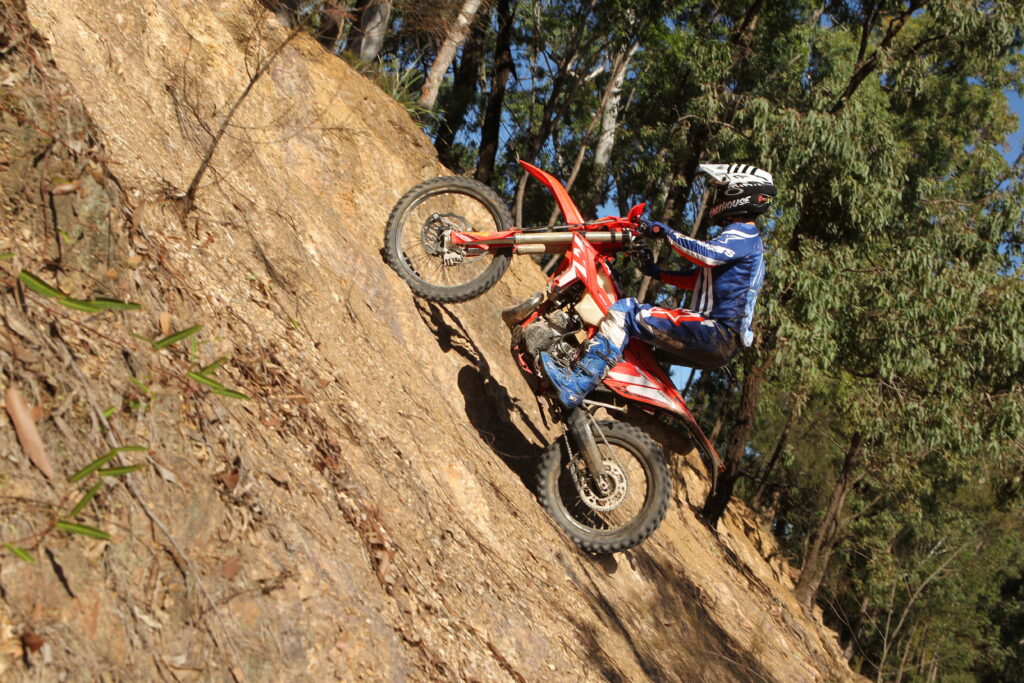
All of which made us ponder the tuneability of the RR300’s power curve via tweaks to its power-valve (PV) settings. For example, can this gem of a two-stroke powerplant be made into an even better tech-terrain mountain goat? And if so, does that come at the expense of top-end power? Do changes to the power-valve settings shift the meat of the power up and down in the rev range, or simply alter how the power comes on – or ‘hits’ – during that all-important transition from bottom-end to mid-range? How quick and easy is it for the average rider to make changes to their engine’s power-valve settings? Is there a performance ‘overlap’ between the three main PV springs available for the RR300, or do they each pick up where the other leaves off? And with all the different-coloured PV spring options available – both the main and inner/auxiliary springs – is it easy to get yourself tangled in PV tuning knots?
For answers to those questions, we teamed up with the boys from Coffs Harbour-based Beta dealership, Midcoast Moto, to test a bunch of PV springs and spring preload combinations on a 2024 Beta RR300 (with a 2024 RR300 Racing model also on hand for comparison). Here’s a snapshot of what we learned during that fascinating testing process; information we hope will answer your most frequently asked questions about this quick and easy (and often overlooked) tuning tool…
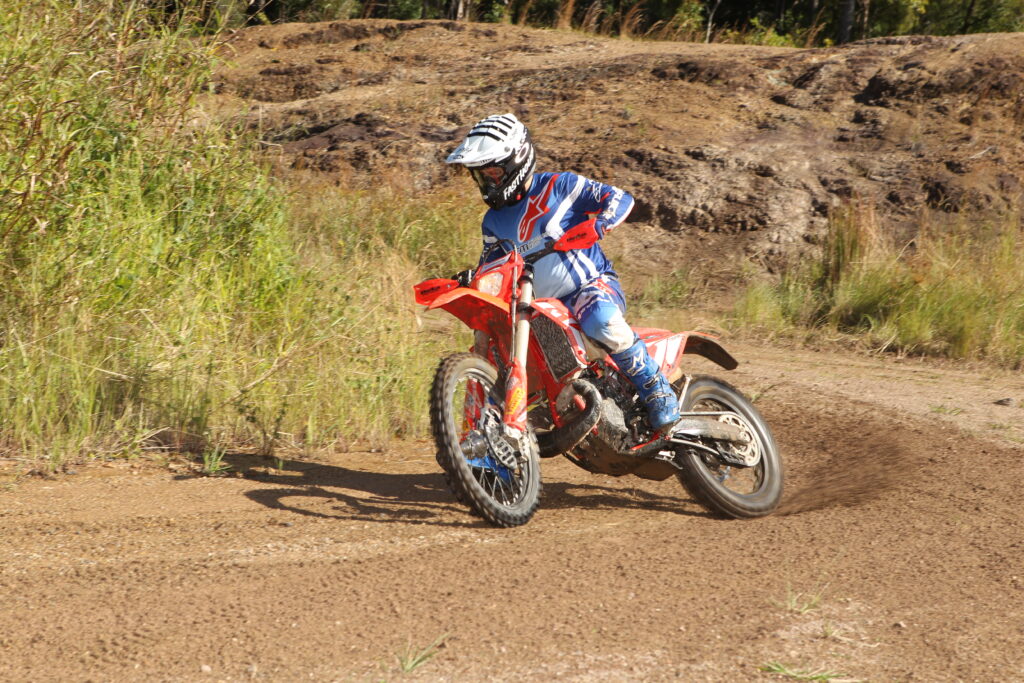
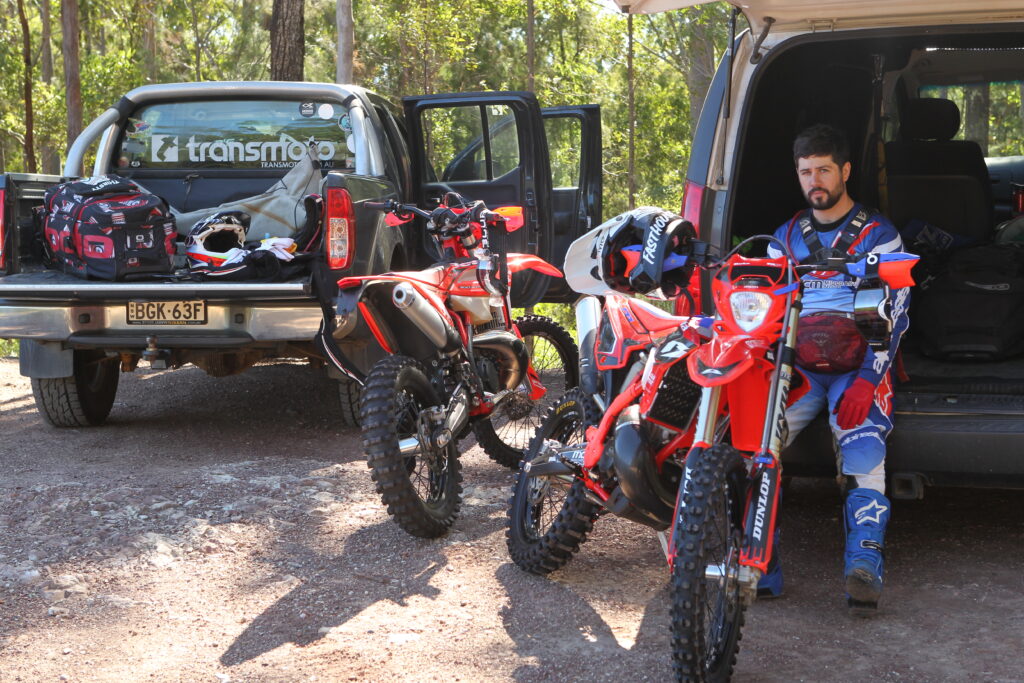
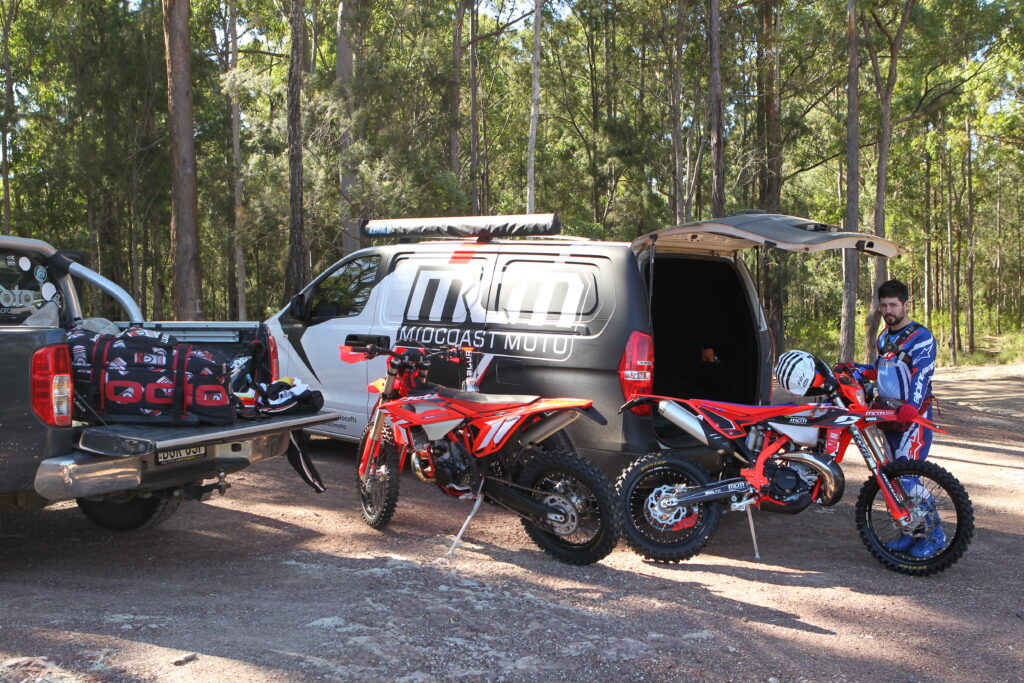
HAS POWER-VALVE ADJUSTMENT BECOME AN UNDER-UTILIZED DIY TOOL WHEN IT COMES TO TUNING TWO-STROKE DIRT BIKE ENGINES?
Absolutely, it has. Perhaps due to the fact a majority of late-model two-stroke enduro bikes now use an electronic power-valve, many Beta owners seem to have forgotten how easy it is to significantly alter their bike’s power delivery by changing the power-valve spring and/or the preload you apply to that spring. The other reason is fear factor. According to a bunch of dealers we’ve spoken to, many owners are too scared to make power-valve adjustments these days for fear of blowing up their engine! In any case, the age-old art of tuning a two-stroke’s engine character through power-valve settings appears to have been lost to some extent. That said, it only takes a bit of trackside tinkering to reinforce just how big a range of adjustability can be unleashed by quick and easy changes to your PV spring and/or its preload settings.
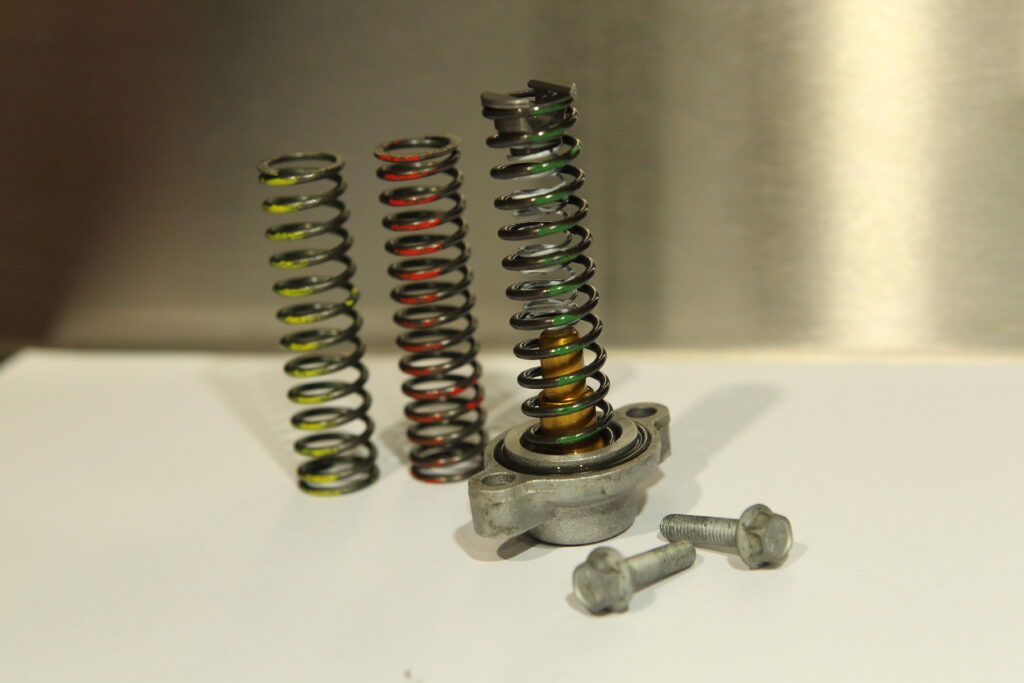
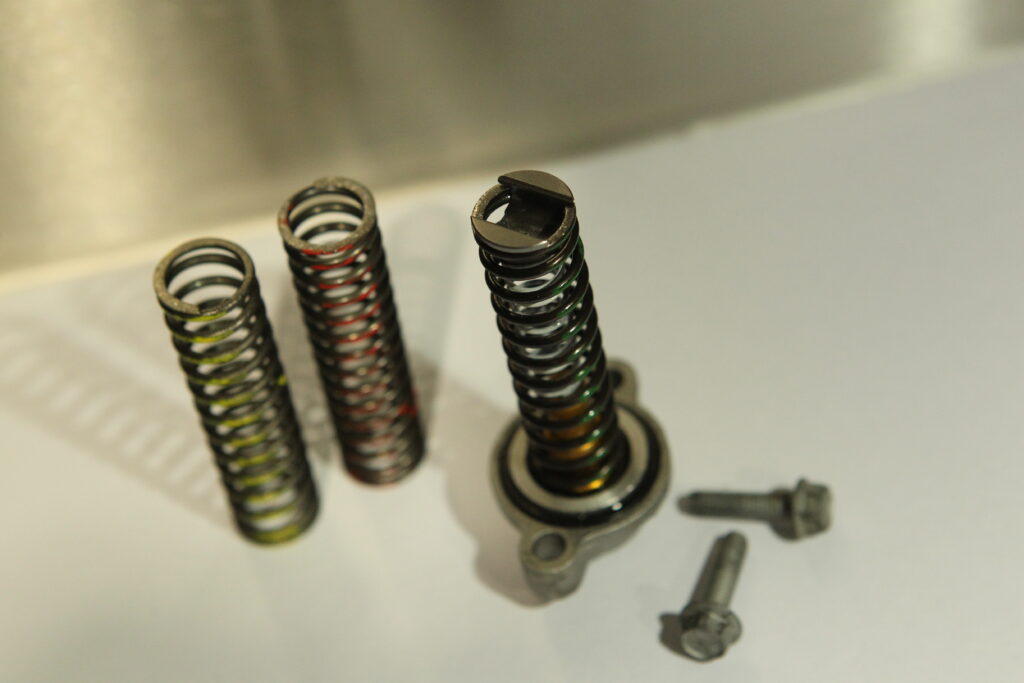
WHAT ARE THE DIFFERENT PV SPRING OPTIONS FOR BETA’S 2024 RR300?
To avoid getting lost down a PV spring rabbit hole, let’s keep this summary topline. Essentially, there are three main PV springs available for Beta’s RR300:
1.) Yellow Spring (stiffest)…
- Stiffest (spring rate: 3.8K).
- Recommended preload: 0-0.25 turns in from flush.
- Designed for max torque/tractability – to dumb the power down the most.
- Comes fitted to 2024 RR300 model from factory (ie, in super-restricted set-up), but the green (softest) spring is normally fitted by the dealer as part of the derestriction process (the green spring comes in the bike’s parts kit).
- Note also that the yellow spring comes fitted to Beta’s 2024 XTrainer models from factory (for max torque).
2.) Green Spring (softest)…
- Softest (spring rate: 3.11K).
- Recommended preload: 1.0-1.5 turns in from flush.
- Comes in parts kit for 2024 RR and RR Racing models.
3.) Red Spring (medium)…
- Medium (spring rate: 3.44K).
- Recommended preload: 0.5-1.0 turns in from flush.
- Comes fitted to 2024 RR Racing models from factory.
While the gauge of these different springs is noticeable different, the colours simply make it easier to know which spring is which at a glance. Note that there are also a range of inner/auxiliary spring available (some of which come with progressive spring rates). But, for the purposes of this article, that’d over-complicate things.
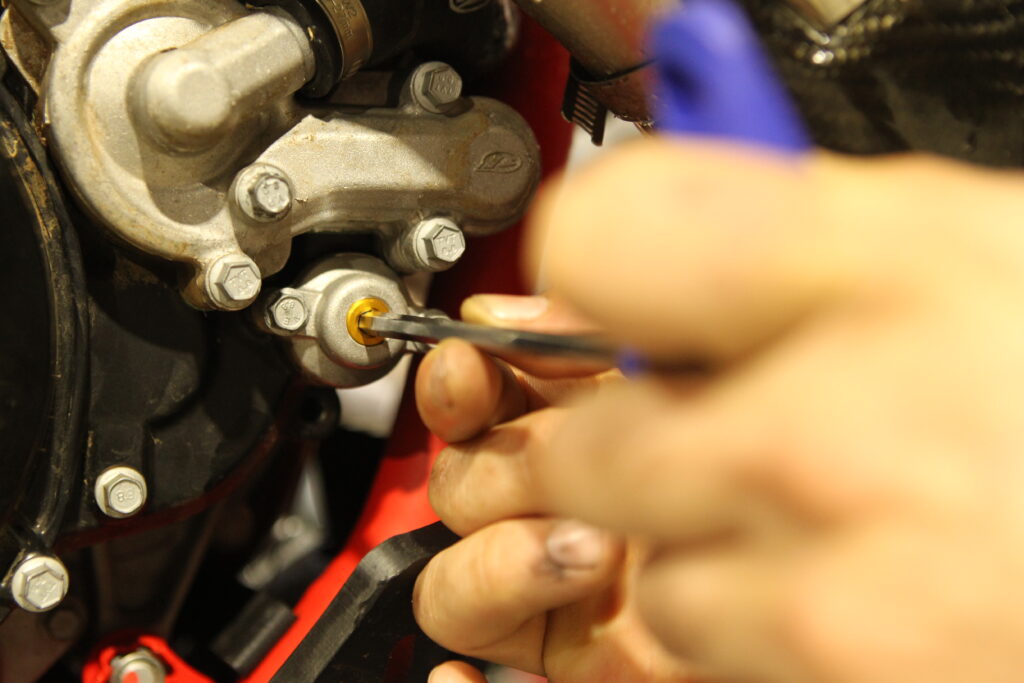

HOW DIFFICULT IS IT TO MAKE ADJUSTMENTS TO YOUR POWER-VALVE SETTINGS?
Not difficult at all. In fact, it’s super-easy. Armed with a 5mm Allen Key, you can make trailside adjustments to power-valve spring preload in a matter of seconds. Dialling the preload adjuster anywhere from flush to a recommended maximum of 3.5 turns in (from flush) with the same PV spring will create a massive difference in the way the power comes on. In fact, even a half-turn will create a significant change. You can make your tuning life even easier by fitting a PWR Valve Adjust Rod – it’s available as a genuine accessory from Beta and allows you to make tool-free adjustments to PV spring preload. Changing the PV spring itself is a little more complicated, but not a lot. It’s simply a matter of removing the two 8mm hex-head bolts securing the PV adjuster cover, then swapping out the spring and reassembling
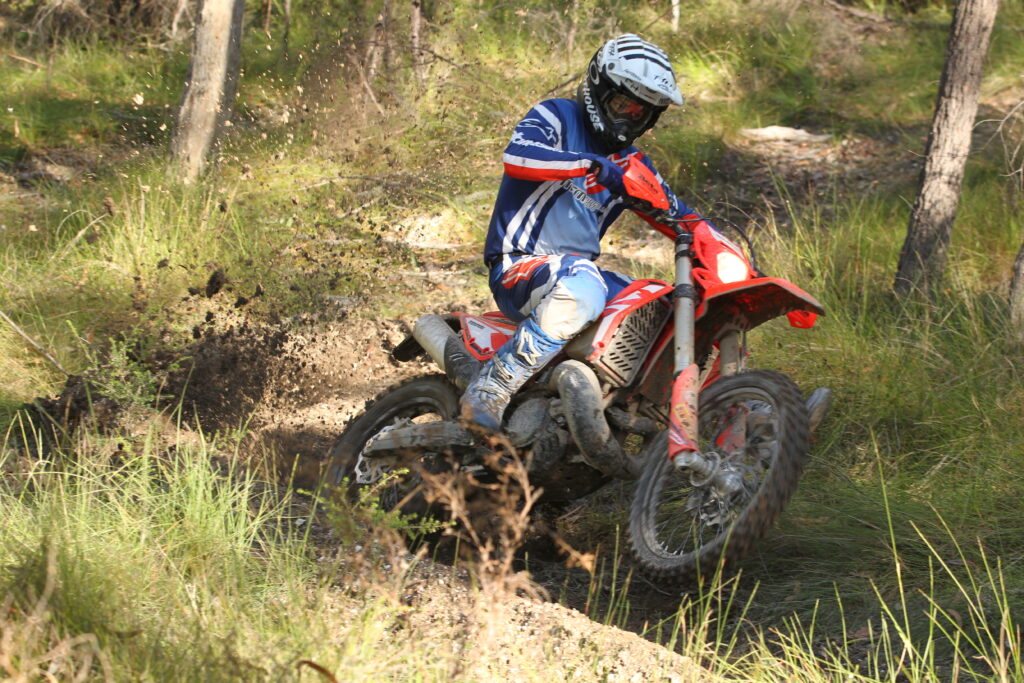
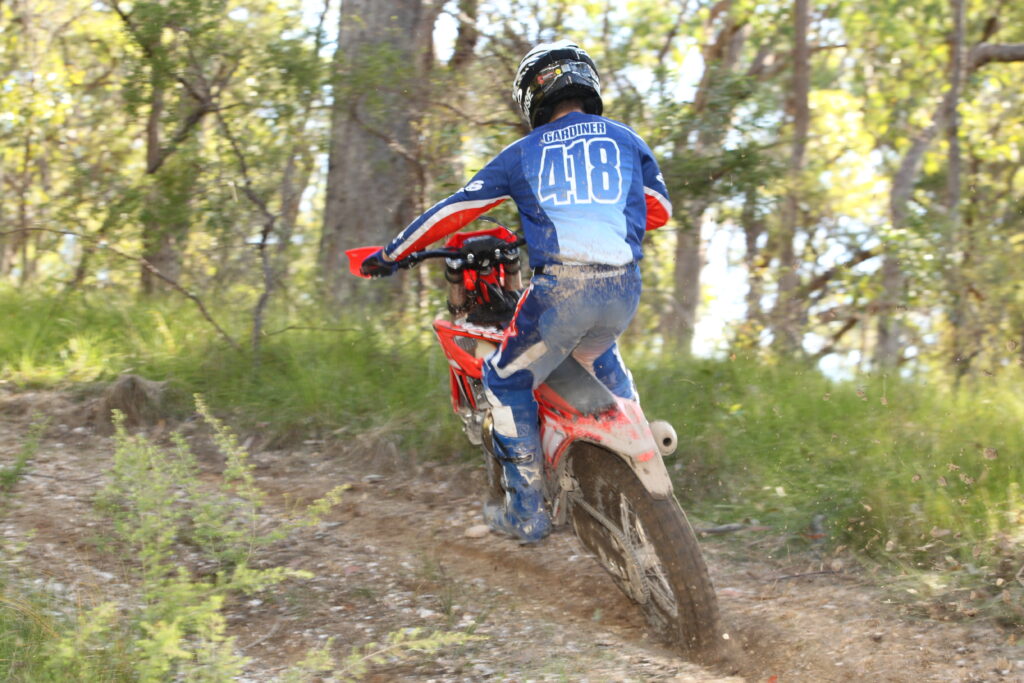
DO PV SETTING CHANGES SHIFT THE POWER UP & DOWN THE REV RANGE, OR SIMPLY ALTER HOW THE POWER COMES ON IN THAT ALL-IMPORTANT TRANSITION FROM BOTTOM-END TO MID-RANGE?
Contrary to what seems to be popular opinion, changing PV springs does not actually shift horsepower up or down the rev range (as aftermarket exhaust pipes tend to do on four-strokes) – even though PV changes often create the perception that the engine’s power has been shifted, increased or decreased. Changes to PV settings will simply determine where in the engine’s rev range the exhaust port opens, and over what RPM range it opens. Therefore, different PV settings will primarily affect how the power transitions from the bottom-end to the mid-range. And that, in turn, has a huge bearing on everything from rear wheel traction to rideability to rider fatigue. Once on the pipe and into the meat of its mid-range and top-end, different power-valve settings have little (if any) impact on power delivery.
ARE ADJUSTMENTS TO PV SETTINGS MORE USEFUL FOR LARGER-CAPACITY TWO-STROKES?
Yes. For large-capacity two-strokes – which have plenty of power and can be a real handful for less experienced riders whose throttle control is a bit hit and miss – the ability to tame the way the power hits via PV setting changes is especially useful. In short, it helps make bikes’ power curve more forgiving and manageable, especially in terrain where traction is scarce.
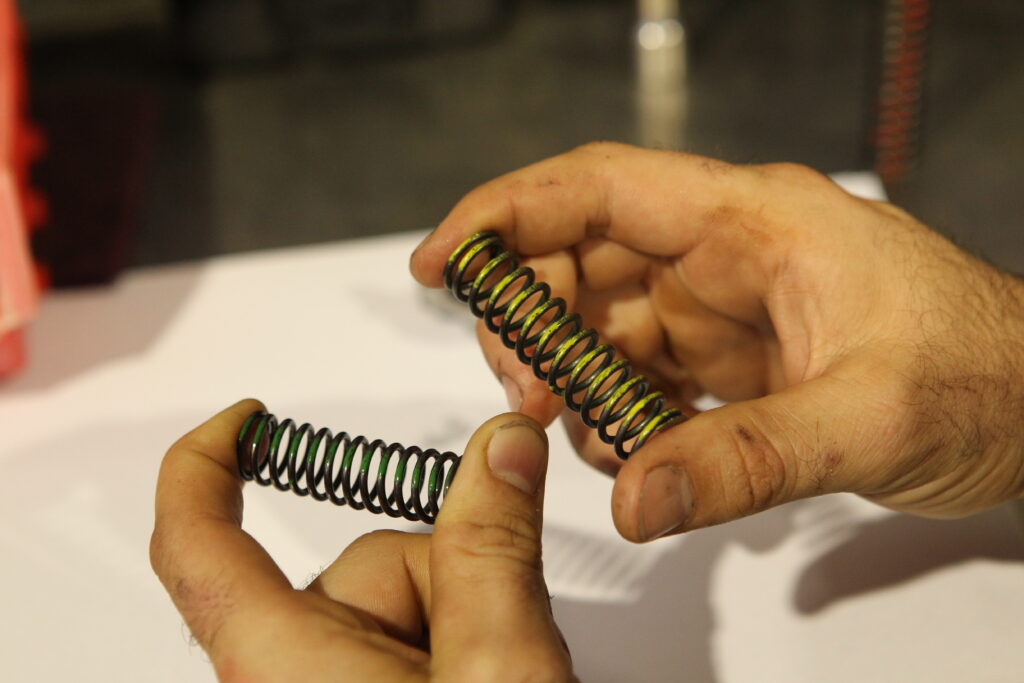
OKAY, SO IN BROAD TERMS, HOW DOES A FIRMER OR SOFTER PV SPRING AFFECT THE POWER CURVE?
- The harder the PV spring (and/or more spring preload), the later/higher in the RPMs the exhaust port will open. Harder PV springs therefore help create a more linear, mellow, tractable and forgiving style of power that’s better suited (generally speaking) to slick or technical terrain or hillclimbs, where there’s limited traction on offer.
- The softer the PV spring (and/or less spring preload), the earlier/lower in the RPMs the exhaust port will open. Softer PV springs therefore help create a more responsive, hard-hitting and even aggressive power curve that’s better suited (generally speaking) to sand or terrain where there’s good traction on offer. In other words, terrain where you prefer a punchier transition from bottom-end to mid-range power, and more immediate response to throttle inputs at lower revs.
YOUR RIDING BUDDIES HAVE ALWAYS CLAIMED THAT, “A FIRMER PV SPRING (AND/OR ADDING PRELOAD TO IT) WILL GIVE YOU MORE TOP-END POWER FOR FAST FIRE TRAILS”. IS THAT TRUE?
No. A firmer PV springs (and/or more preload) will only affect how the power transitions from the bottom-end to the mid-range. It won’t give you more top-end power – on fire trails or anywhere else, for that matter. That said, delaying the opening of the exhaust valve can create the perception that the power has been shifted higher in the rev range – most likely because the mid-range and top-end feels punchier and more responsive relative to the more linear style of power at lower revs.

WHAT ARE THE OPTIMAL PV SETTINGS FOR BETA’S RR300?
Here’s a snapshot of the notes we made about power delivery after testing a bunch of different power-valve spring and spring preload combinations in our 2024 RR300:
- Yellow Spring with 1.5 turns of preload: These restrictive settings created a docile transition of power as the engine comes onto the pipe, taking away any snappiness down low and making it more manageable to find traction. At low RPMs, it almost felt like Beta’s XTrainer – a very soft, smooth, tractable style of power that’ll chug up a hill at very low revs and refuse to stall, but short on high-rev excitement. Perfect for tech terrain, and for inexperienced riders because it’s way less likely to punish poor throttle control. More experienced riders, however, will need to resort to lots of clutch (and bigger throttle inputs) to get the snap required to loft the front wheel over obstacles at short notice.
- Yellow Spring with 0 turns of preload (ie, flush): Backing off the preload 1.5 turns (that is, from 1.5 turns to flush) made a surprisingly big difference with the yellow spring. These settings brought significantly more life back at low RPMs, but stopped short of the throttle response created by the softer green spring.
- Green Spring with 2.0 turns of preload: These settings created pretty much the same power curve as the previous settings (yellow spring with no preload).
- Green Spring with 1.5 turns of preload: Slightly punchier transition of power from bottom to mid. Very tractable for average riders, but still lacking a little pep for faster riders in terrain that offers decent traction.
- Green Spring with 1.0 turn of preload through to flush (adjustments made in 0.5-turn increments): At this point, each half-turn reduction in spring preload created an exponentially larger step up in low-rev punch and throttle response. We reckon more experienced riders will settle on 0.5 to 1.0 turns of preload as those setting generated the best combination of response and tractability across a range of terrain. Backing the PV spring preload adjuster out to 0 turns (flush), however, felt like a half-turn too far for anything but deep sandy conditions (or a motocross track) because it made the power much more hard-hitting. And if you want to keep the rear wheel hooking up and driving straight, that aggressive style of power can only be harnessed by precise throttle control (especially in tight, tree-lined terrain).
IF IN DOUBT ABOUT PV SPRING PRELOAD SETTINGS, DO YOU OPT FOR A MORE OR LESS AGGRESSIVE STYLE OF POWER?
That all depends on your riding ability and the terrain you tend to ride in most. But all other things being equal, our testing suggested it’s better to opt for a preload setting that creates snappier power. Why? Two reasons. Firstly, because the engine gets into the meat of its power earlier, it’s more willing to be short-shifted – meaning you can effectively hold gears longer, which tends to make you ride smoother. Secondly, you can always take the edge off the power delivery by flicking the bar-mounted ignition map to Rain Mode – an OTF adjustment that actually makes a significant difference to the power delivery’s punch on Beta’s two-stroke models.
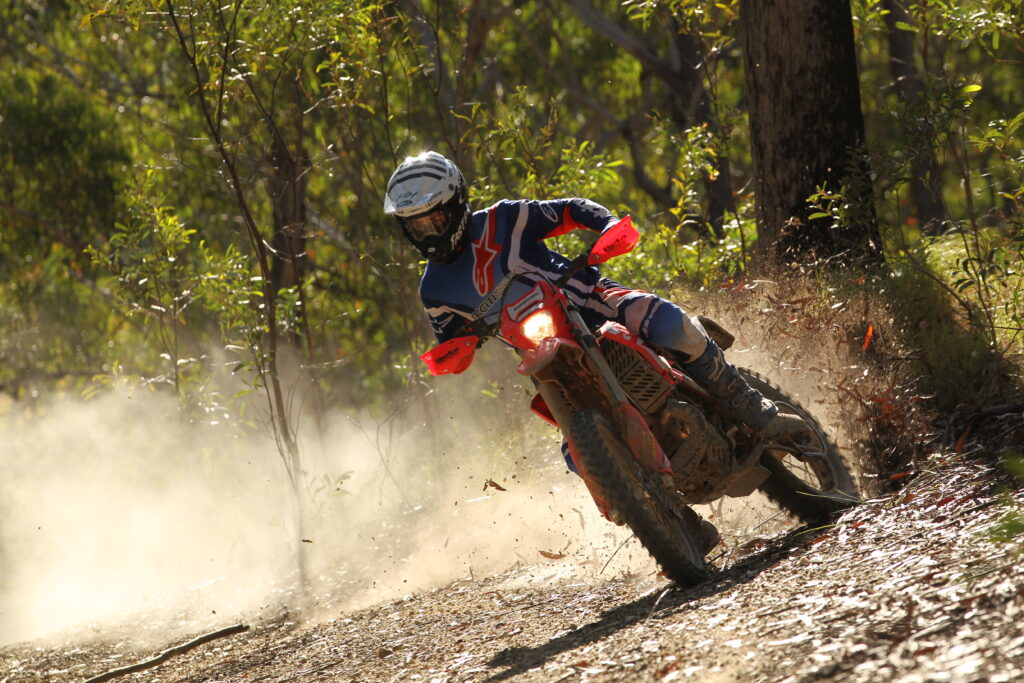
AS A MATTER OF INTEREST, HOW DOES THE RR MODEL’S POWER DELIVERY COMPARE WITH THAT OF BETA’S UP-SPEECED RR RACING MODEL?
With a different cylinder head, dual spark plugs and more compression, Beta’s 2024 RR300 Racing model (now called the “RR300 Race” for 2025) was specifically designed as a race-ready machine with a punchier style of power that’s sought-after by most racers. So, it’s little wonder that the Racing model’s power delivery with standard PV settings was even more responsive than the RR300’s power curve when using the most aggressive PV settings (green spring with 0 turns of preload).
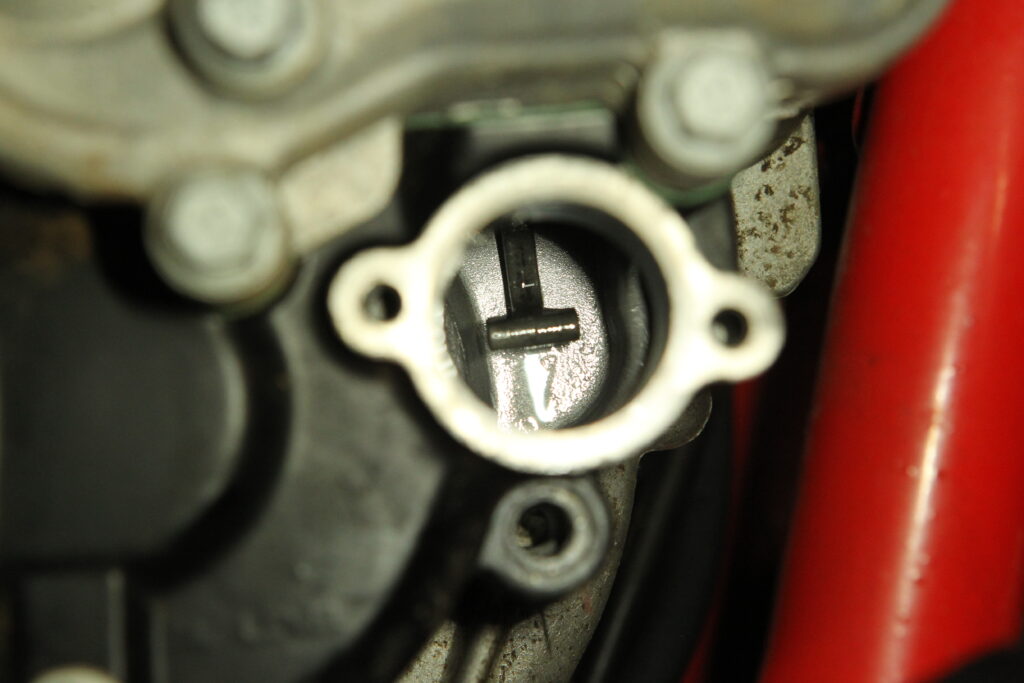

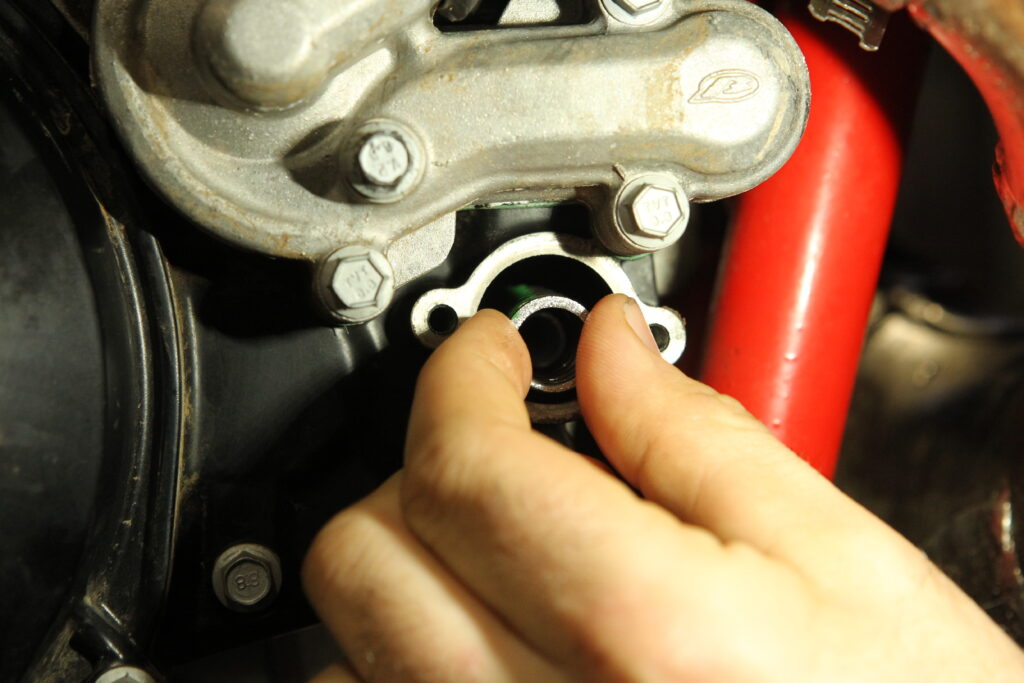
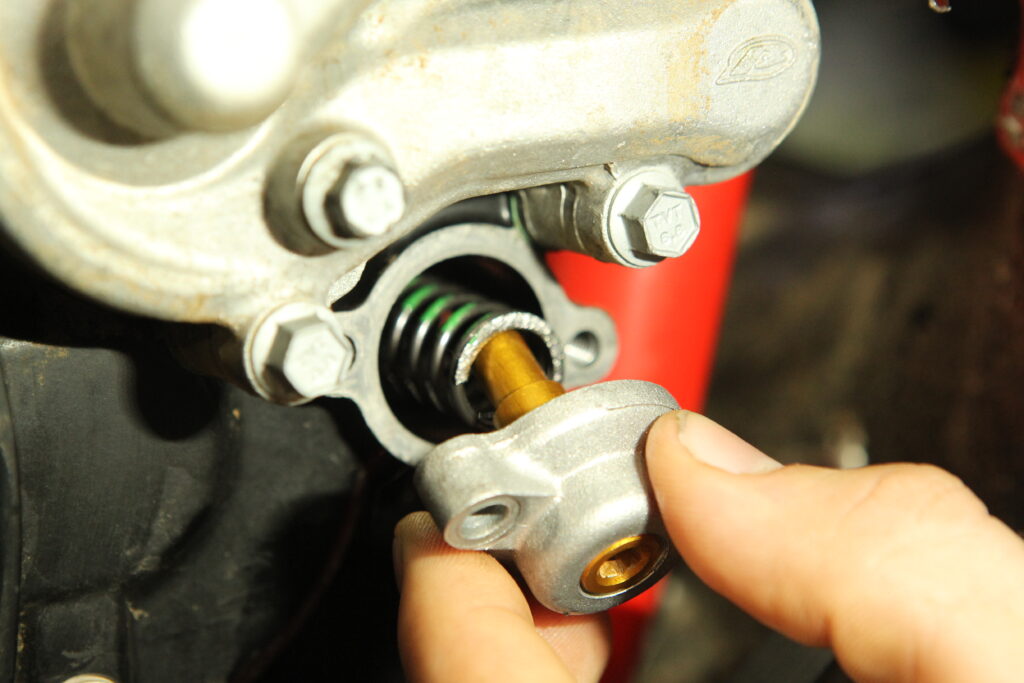
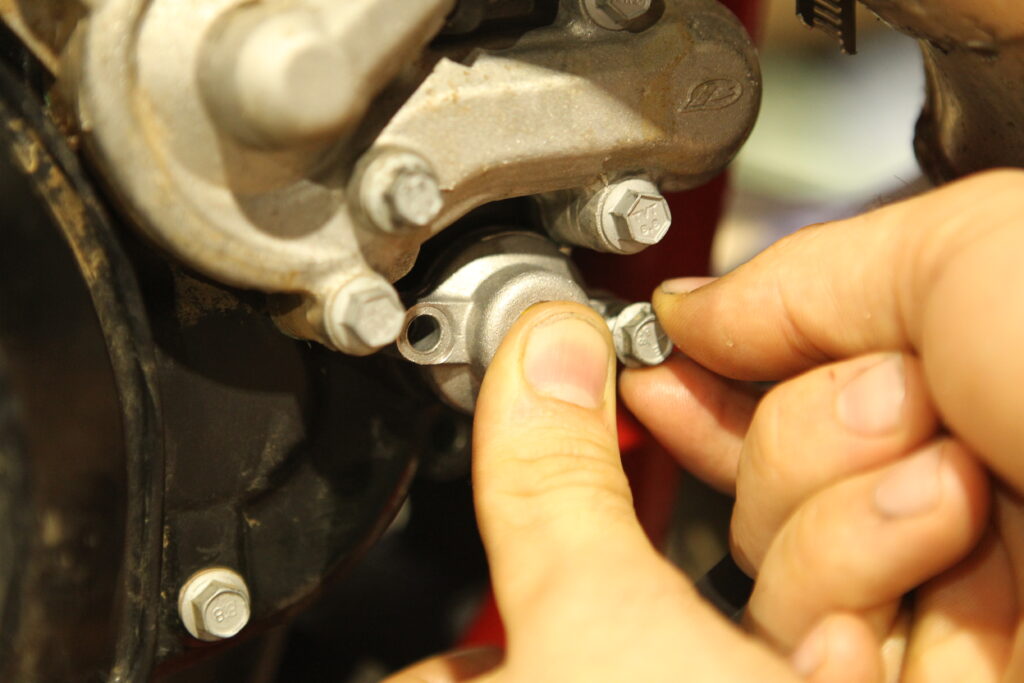
ANY DIY TIPS FOR CHANGING PV SPRINGS?
Yep. According to Midcoast Moto’s Jake Gardiner, here are the main ones:
- Remove any dirt and grit from the area before removing the PV adjuster cover.
- Loosen the 8mm hex-heads on the cover evenly to avoid pinching the O-ring.
- While it’s open, take the time to check that the PV’s actuating arm is moving in and out freely (using a spring puller or right-angle pick).
- When reassembling, make sure the inner springs guide/collar fits over the actuating arm correctly.
- Use your thumb to keep pressure on the PV adjuster cover/cap. This will keep it square before doing up the PV adjuster cover/cap’s two 8mm bolts.
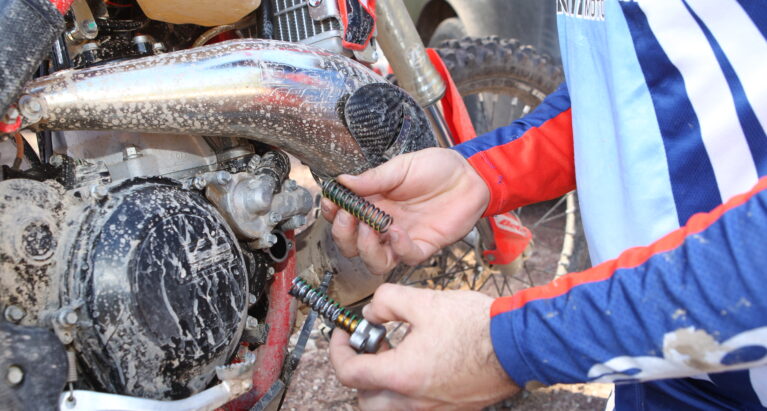
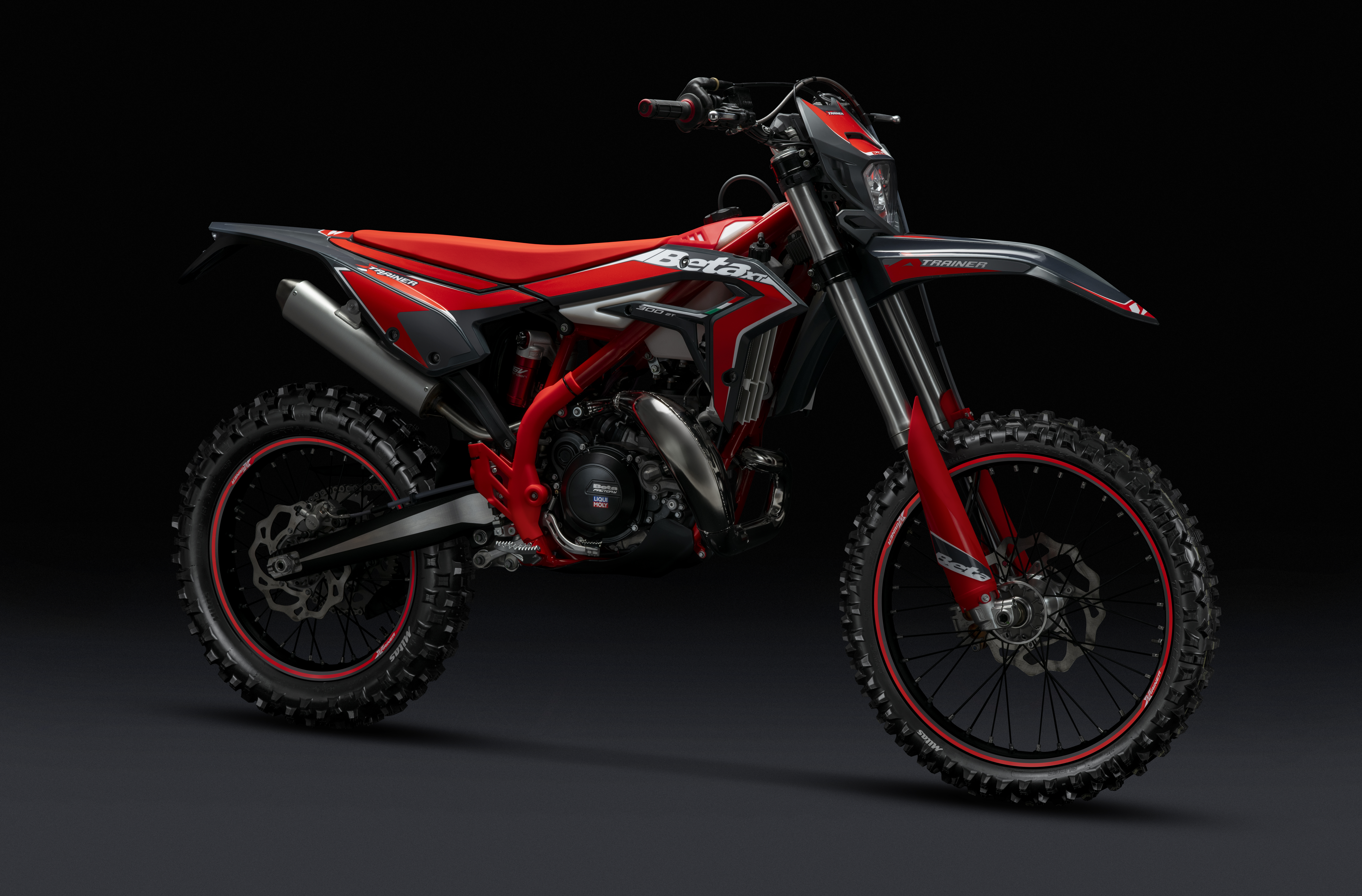
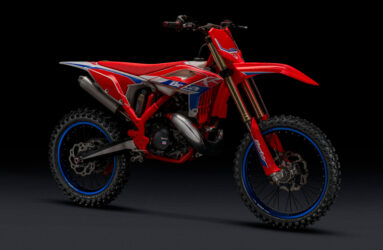

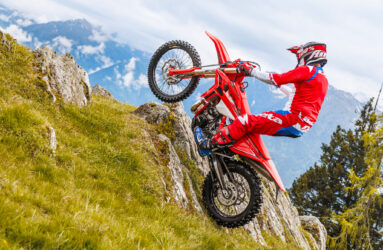

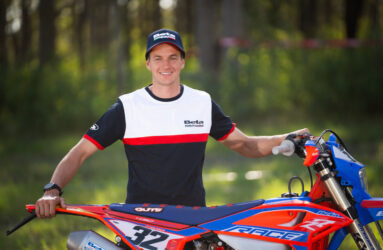
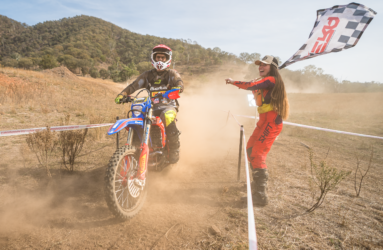
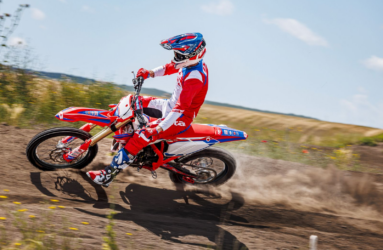
Be the first to comment...